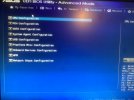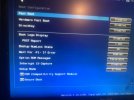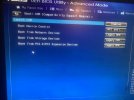After many years on ubuntu I wanted to install and try freebsd. First l tried to install it on my laptop that already had Kali linux running on it. After install l cant boot in to the system. Just a blank screen and when l touch any keys it just beeps.
After that failed install i installed it on another really old laptop and it worked.
Next attempt was to install it on my stationary computer. After the installation l cant log in. Nothing happens just a black screen no prompt, totally dead. If l press F2 i get into bios uefi settings but l dont know what to do here and if the solution could hide in these settings.
Now l have two computers that are dead.
What am l missing? Would be thankful if someone could point me in the right direction.
After that failed install i installed it on another really old laptop and it worked.
Next attempt was to install it on my stationary computer. After the installation l cant log in. Nothing happens just a black screen no prompt, totally dead. If l press F2 i get into bios uefi settings but l dont know what to do here and if the solution could hide in these settings.
Now l have two computers that are dead.
What am l missing? Would be thankful if someone could point me in the right direction.



